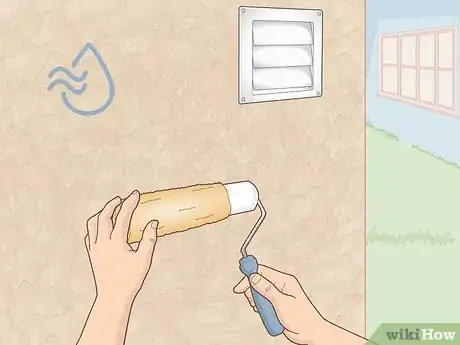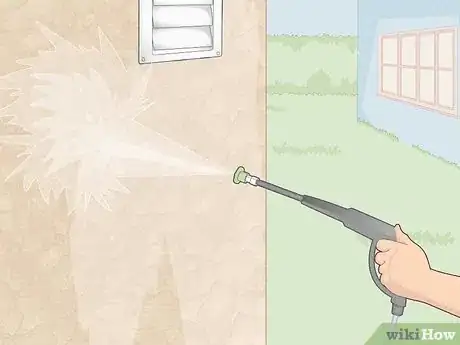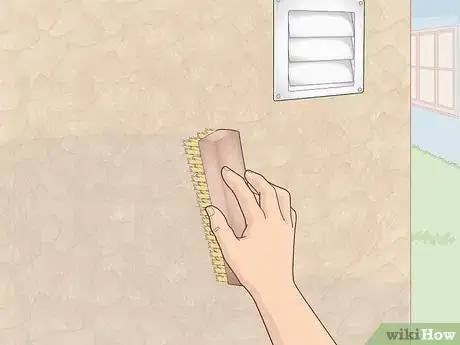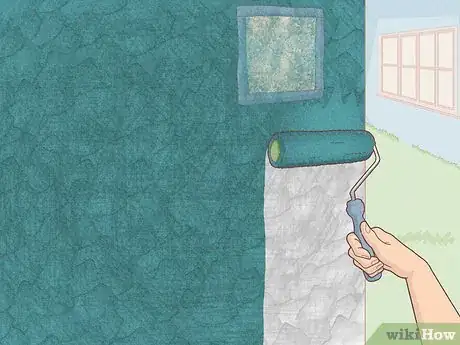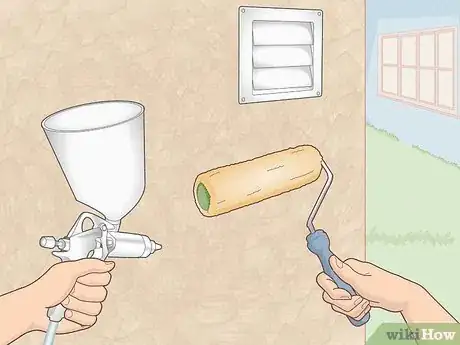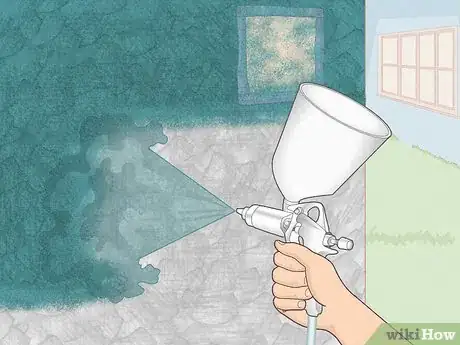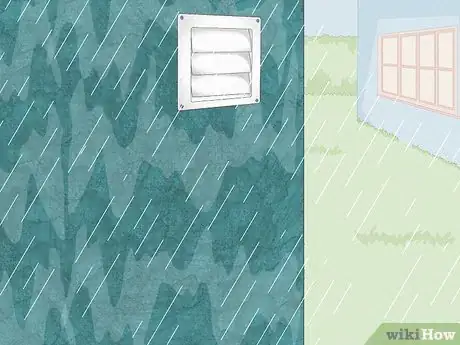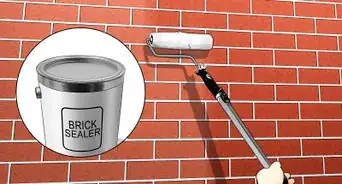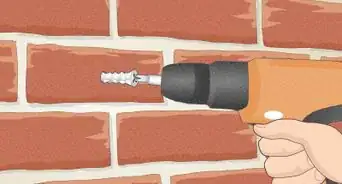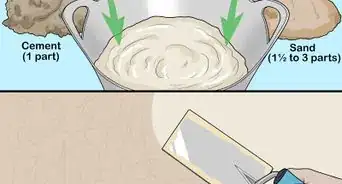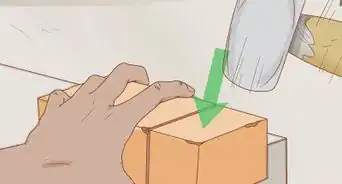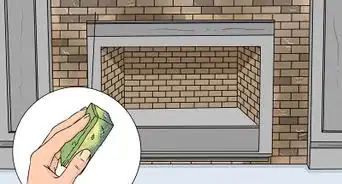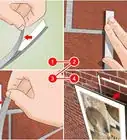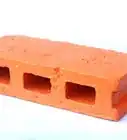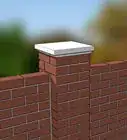This article was co-authored by Patrick Coye and by wikiHow staff writer, Eric McClure. Patrick Coye is the owner and operator of Patrick’s Painting & Home Improvement in Alexandria, Virginia. With over 15 years of experience in residential construction, Patrick specializes in painting, wallpaper removal/installation, drywall, staining decks and fences, and kitchen cabinetry painting. To date, Patrick and his team have painted over 2,000 houses and stained over 800 decks. Patrick's Company won a "Top Job" award from the American Painting contractor magazine in 2020.
There are 9 references cited in this article, which can be found at the bottom of the page.
wikiHow marks an article as reader-approved once it receives enough positive feedback. In this case, 100% of readers who voted found the article helpful, earning it our reader-approved status.
This article has been viewed 222,462 times.
If you want your home to be the envy of the neighborhood, few exterior finishes stand out quite like painted stucco. The unique texture of stucco combined with the uniform finish of your paint is sure to raise some eyebrows. Unfortunately, stucco tends to absorb and hold on to moisture, and it needs time to breathe and dry out after heavy rains. This means that you’re probably better off leaving your stucco unpainted if you live in an area with a lot of precipitation, since paint can make it even harder for stucco to dry out. Just keep that in mind before you start breaking out the painting supplies!
Steps
How do I repair cracks before painting?
-
1Use masonry caulk to fill in cracks smaller than 1⁄16 in (0.16 cm). For really minor cracks and gaps, buy a tube of masonry caulk. Insert it into your caulk gun and clip the tip off with a pair of scissors. Apply a bead of the masonry caulk over the crack, and smooth it over with a gloved finger (you don’t need to press hard). Wait at least 24 hours before doing anything else.[3]
- It’s natural for a crack or two to develop over time, but if you’ve got dozens of cracks to fill, it may be time to replace your stucco and you probably shouldn’t paint it.[4]
-
2Fill larger cracks with a patching compound and wait for it to dry. If you have some smaller chunks missing, chip away any loose material around the area with a putty knife. Then, rinse the area with water and use a wire brush to clean away any dust. Use a putty knife to mix a stucco patching compound with water until it’s a thick paste. Scoop a chunk of compound up in your putty knife and rub it into the gap you’re repairing. Drag your putty knife back and forth over the compound in random directions to replicate the texture of stucco. Keep adding and spreading more compound to the area until it matches the wall around it. Wait for the compound to fully cure.[5]
- This is strictly for small damaged areas that were hit with an object, or bumped against one too many times. If you have big sections of stucco just falling out on their own though, it’s time to hire a stucco specialist to redo your exterior.
Should I clean stucco before painting?
-
1Yes, start by pressure washing the stucco if it’s especially dirty. If your wall is exceptionally dirty, power wash it first. Set your pressure washer to the lowest pressure setting and use a wide-spray tip. Spray down each section of the stucco to remove any dust, dirt, and debris. Keep the wand moving to avoid putting too much pressure in any one location. Wait for the stucco to dry out completely[6]
- If you use a higher pressure setting or a thinner nozzle, you may damage the stucco. You may also damage the stucco if just hold the wand in one spot for too long.
- If you see any chalky, white dust on the stucco, that’s efflorescence. Scrub all of that stuff off with a wire brush or mix a masonry soap into your pressure washer’s tank before using it. If you paint over efflorescence, it’s going to reappear over time.[7]
-
2Finish with a stiff brush or broom to clean the wall thoroughly. Grab a large, stiff brush or broom. Working in sections, brush the surface of the stucco to remove any dust or dirt that’s built up in the texture of the wall. Cover each section in a combination of vertical, horizontal, and diagonal strokes to ensure you brush the wall from every angle. If your wall extends up to a second floor, use a ladder to get up there and enlist help to hold it steady from the ground while you work.
Is it better to spray or roll paint on stucco?
-
1A roller is probably easier for smaller surfaces. If you’re just painting a single wall or your home is only one story, it’s probably easier to just roll the paint on. Use a synthetic brush to paint the trim, and a thick-nap roller to cover the wider sections. It may take 2 coats to fully cover the surface and achieve a uniform look. Wait at least 24 hours between coats if you necessary.[11]
- You really don’t want to use a brush for the entire job. It’s just going to take forever and it will be really hard to cover the wall entirely.
-
2Use a sprayer for larger walls and “backroll” it. For larger walls, buy or rent a paint sprayer. Use a wide nozzle setting and cover each wall using long, vertical strokes. Once you’ve covered a roughly 10 by 10 feet (3.0 by 3.0 m) section with your sprayer, set it down and grab a thick-nap roller. Roll over the section you’ve just painted to smooth the paint out and spread it around. Keep working like this until you’ve covered the entire wall in paint.[12]
- You can cut the trim with a synthetic brush if you’d like, or lay down a drop cloth on the floor and hold flat lengths of cardboard against edges you want to keep dry while you paint.
- Cover each area you’ve painted with a second coat of random strokes after you backroll it. This sounds weird, but stucco has a bunch of different little angles in the texture, so pick the sprayer back up and just sort of randomly spray around the wall in a bunch of different directions. This will fill in any minor spots you missed.[13]
Expert Q&A
Did you know you can get expert answers for this article?
Unlock expert answers by supporting wikiHow
-
QuestionCan you use a roller to paint stucco?
 Patrick CoyePatrick Coye is the owner and operator of Patrick’s Painting & Home Improvement in Alexandria, Virginia. With over 15 years of experience in residential construction, Patrick specializes in painting, wallpaper removal/installation, drywall, staining decks and fences, and kitchen cabinetry painting. To date, Patrick and his team have painted over 2,000 houses and stained over 800 decks. Patrick's Company won a "Top Job" award from the American Painting contractor magazine in 2020.
Patrick CoyePatrick Coye is the owner and operator of Patrick’s Painting & Home Improvement in Alexandria, Virginia. With over 15 years of experience in residential construction, Patrick specializes in painting, wallpaper removal/installation, drywall, staining decks and fences, and kitchen cabinetry painting. To date, Patrick and his team have painted over 2,000 houses and stained over 800 decks. Patrick's Company won a "Top Job" award from the American Painting contractor magazine in 2020.
Painting Specialist
-
QuestionHow can I match the color?
 CurtMCommunity AnswerUnless you know the exact shade used on the surface previously, this can be quite difficult. If you're unable to find an exact match, you may have no choice but to paint over the existing color with a similar shade. For future reference, you're better off sticking to basic shades such as white, tan, and eggshell when painting stucco, as these are easier to match for follow-up paint jobs.
CurtMCommunity AnswerUnless you know the exact shade used on the surface previously, this can be quite difficult. If you're unable to find an exact match, you may have no choice but to paint over the existing color with a similar shade. For future reference, you're better off sticking to basic shades such as white, tan, and eggshell when painting stucco, as these are easier to match for follow-up paint jobs. -
QuestionHow long do I have to wait after it rains to paint the outside of a stucco and wood-trimmed house?
 Community AnswerThis depends on many things, like outdoor temperature and humidity. You have to be completely sure the wood is dry.
Community AnswerThis depends on many things, like outdoor temperature and humidity. You have to be completely sure the wood is dry.
References
- ↑ https://www.sun-sentinel.com/news/fl-xpm-1998-10-16-9810160092-story.html
- ↑ https://www.sun-sentinel.com/news/fl-xpm-1998-10-16-9810160092-story.html
- ↑ https://www.youtube.com/watch?v=_vDcSBDcBW4
- ↑ http://www.stuccomfgassoc.com/industry/papers/PlasterCouncil_tech4_crack.pdf
- ↑ https://youtu.be/mybdAtNMhQA?t=63
- ↑ https://www.silive.com/homegarden/2018/04/ask_the_expert_how_can_i_clean.html
- ↑ https://www.sun-sentinel.com/news/fl-xpm-1998-10-16-9810160092-story.html
- ↑ https://www.sun-sentinel.com/news/fl-xpm-1998-10-16-9810160092-story.html
- ↑ https://youtu.be/_vDcSBDcBW4?t=130
- ↑ https://www.bobvila.com/articles/wall-texture-types/
- ↑ https://www.onthehouse.com/painting-stucco-the-correct-way/
- ↑ https://www.onthehouse.com/painting-stucco-the-correct-way/
- ↑ https://youtu.be/_vDcSBDcBW4?t=167
- ↑ https://www.sun-sentinel.com/news/fl-xpm-1998-10-16-9810160092-story.html
- ↑ https://www.sun-sentinel.com/news/fl-xpm-1998-10-16-9810160092-story.html
About This Article
Stucco can be tricky to paint because of it’s rough and uneven texture. But if you clean the surface and apply a layer of masonry paint, it should turn out well. Start by pressure washing the stucco to remove dirt and impurities from the surface. Allow it to dry completely, then dip a paint roller into a tray of masonry paint and roll it onto the stucco using smooth, straight lines. Work your way from one end to the other and apply a thin, even coat. Allow the paint to fully dry and then roll on a second coat for better coverage. When the paint cures after about a month, it will keep your stucco protected for years. For tips about how to fill in gaps with a masonry brush, keep reading!
